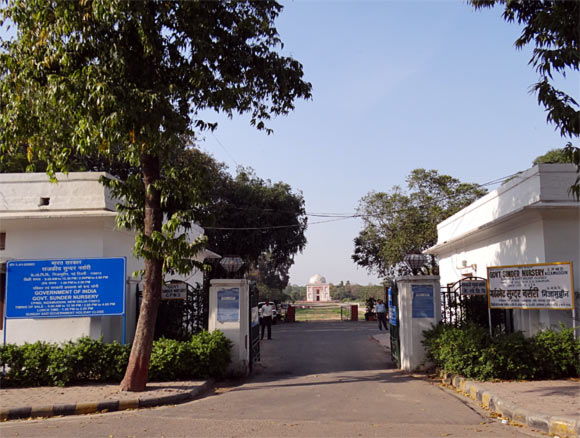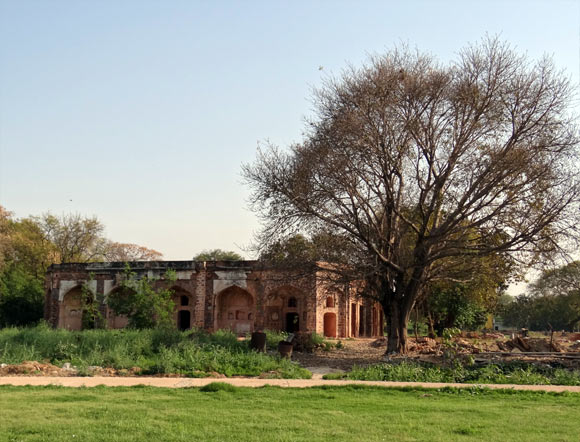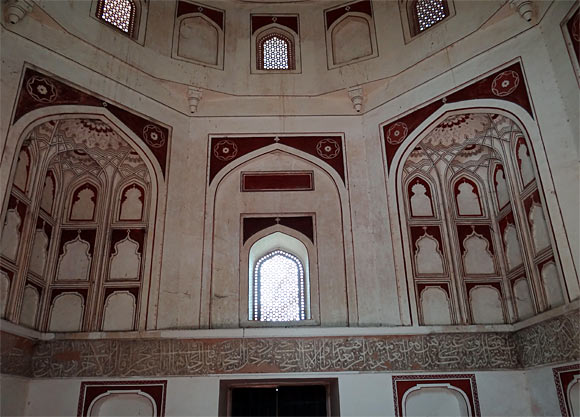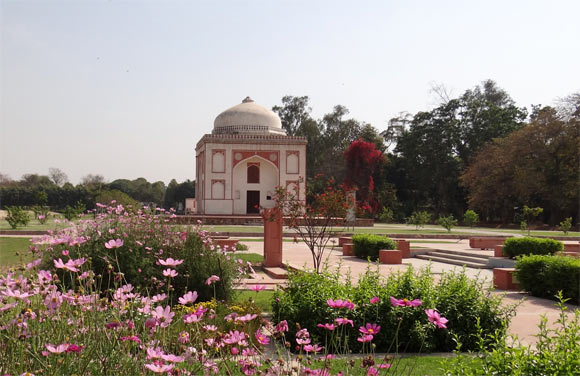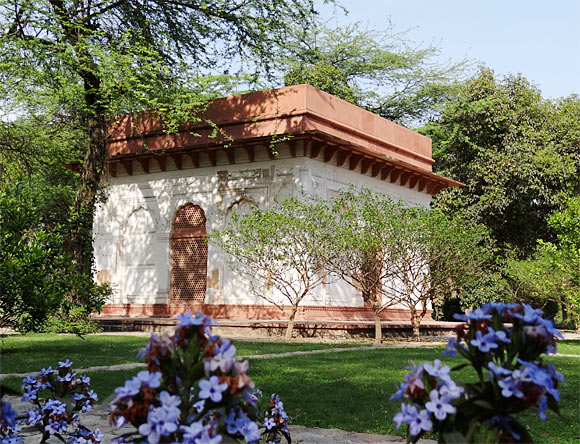 | « Back to article | Print this article |
Exploring Delhi: The fascinating Sunder Nursery
Under the shadow of the Humayun's Tomb lies a nursery spread across 70 acres.
Some wonderful things are happening in the Sunder Nursery. As the restoration work at Humayun Tomb complex winds down, the attention is focussing on the lesser known Sunder Nursery that lies on the left of the Humayun Tomb parking.
Sunder Nursery spread over seventy acres is India's largest government nursery. Apart from selling potted plants and cut flowers at reasonable rates the nursery is home to several heritage structures from the 16th century currently in different stages of restoration along with significant Sufi graves.
Exploring Delhi: The fascinating Sunder Nursery
Sunder Nursery played an important role during the establishment of Delhi's Eighth City by the British. Sunder Bagh, then known as Azim Bagh, housed rare plant species from different British colonies across the world. It was also used to experiment with trees that were proposed to be planted in the new city.
About 1500 shady trees we see today along the wide roads of Lutyens's Delhi came from this nursery. Those days, Azim Bagh stood on the historic Grand Trunk Road between Humayun Tomb and Purana Qila. In the build up to Delhi 2010 Commonwealth Games there was a proposal to build a road through the nursery to connect NH24 to Lodhi Road for faster connectivity to JN Stadium.
Exploring Delhi: The fascinating Sunder Nursery
The idea was scrapped in the face of resistance by environmentalists. In 2009 DUAC formally approved the plan to convert Sunder Nursery into an ecological heritage zone.
Sunder Nursery renovation is part of Urban Renewal Initiative covering Humayun Tomb, Nizamuddin Basti and Sunder Nursery. The initiative is a Public Private Partnership comprising of ASI, CPWD and Aga Khan Trust for Culture. The plan envisages the entire premises as an amalgamation of Forest, Heritage and Nursery functions. To achieve this, a nursery has been set up over seven acres at the northern end.
Exploring Delhi: The fascinating Sunder Nursery
Delhi's first arboretum or micro-habitat zone is being created over 20 acres that will showcase 300 species of plants and trees over different habitats found across the city -- Dabar (Marshy), Kohi (Hill), Khadar (Riverine), and Bangar (Alluvial). In addition, there will be a Garden House exhibiting plant species from Tropics and South India and a Bonsai House hosting exotic species.
Running through the park will be a Central Axis patterned on Chahar Bagh or four part paradise garden surrounding Humayun Tomb. The vista will have fountains and lawns and once completed will stretch from Humayun Tomb's entry plaza to Azimganj Sarai. An amphitheatre is also being built reflecting a lotus pond excavated here. The amphitheatre will be the setting of cultural events in the backdrop of Sunderwala Burj and Sunderwala Mahal. This will add another dimension of culture to this environment and heritage hub.
Exploring Delhi: The fascinating Sunder Nursery
Sunderwala Mahal
Sunderwala Mahal lies a few yards to the right of Sunderwala Burj. It is a one storey building with arches all around. The Mahal is awaiting restoration and there is no identifying sign yet. Sitting under shady trees the Mahal seems a little eerie in the rustling breeze.
Sunderwala Burj
The Sunderwala Burj occupies place of pride in the complex. Entire Sunder Nursery development is centred on it. The Burj, an early Mughal building is square domed and was originally meant to house a grave. However, no grave is found inside. Recently, the Burj has undergone extensive restoration sponsored by US Ambassador who gave a grant of $50,000 along with matching grant from Aga Khan Trust.
The Burj now wearing a fresh coat of white paint and restored inscriptions presents a pretty picture amid the spring blooming flower beds. Due to unknown reasons, the door was locked and you missed seeing the restored floral motifs on the dome ceiling.
Exploring Delhi: The fascinating Sunder Nursery
Lakkarwala Burj
Just beyond the Sunder Burj towards right is another hidden wonder known as Lakkarwala Burj. Lakkarwala is similar to Sunderwala but only bigger and perched on a high platform. This burj has also been restored and looks resplendent amid the roses.
The dome with its elaborate red coloured motifs, jaali jharokhas and squinch arches looks magnificent.
Exploring Delhi: The fascinating Sunder Nursery
Mughal Pavilion
Moving right from the Sunderwala Mahal and following the concrete path will bring you to the restored Mughal Pavilion. Looking at the 'before' photos of the pavilion on the sign board you can't help admiring the restoration work done on the pavilion.
Sitting under overhanging branches of trees, the pavilion in white and red presents a tranquil picture.
Exploring Delhi: The fascinating Sunder Nursery
Arched Gateway
With trees threatening to uproot it, the Arched Gateway is a strange looking structure probably part of a bigger building. The gateway lies towards North West of the Mughal Pavilion. The gateway is unusually large in proportion to the surrounding walls.
Marijuana plants grow with abandon all around. You can barely see the Sunderwala Burj through the foliage about 300 metres to your left. You are again in a zone of bliss. The place qualifies as another surprise Delhi throws at you just like at Lal Kot in Mehrauli and Hauz Khas lake.
Sunder Nursery is a perfect setting for both nature and history. Come enjoy the tranquility away from the cacophony of the city. It is one of the best kept secrets of Delhi where you can have the whole place to yourself.

